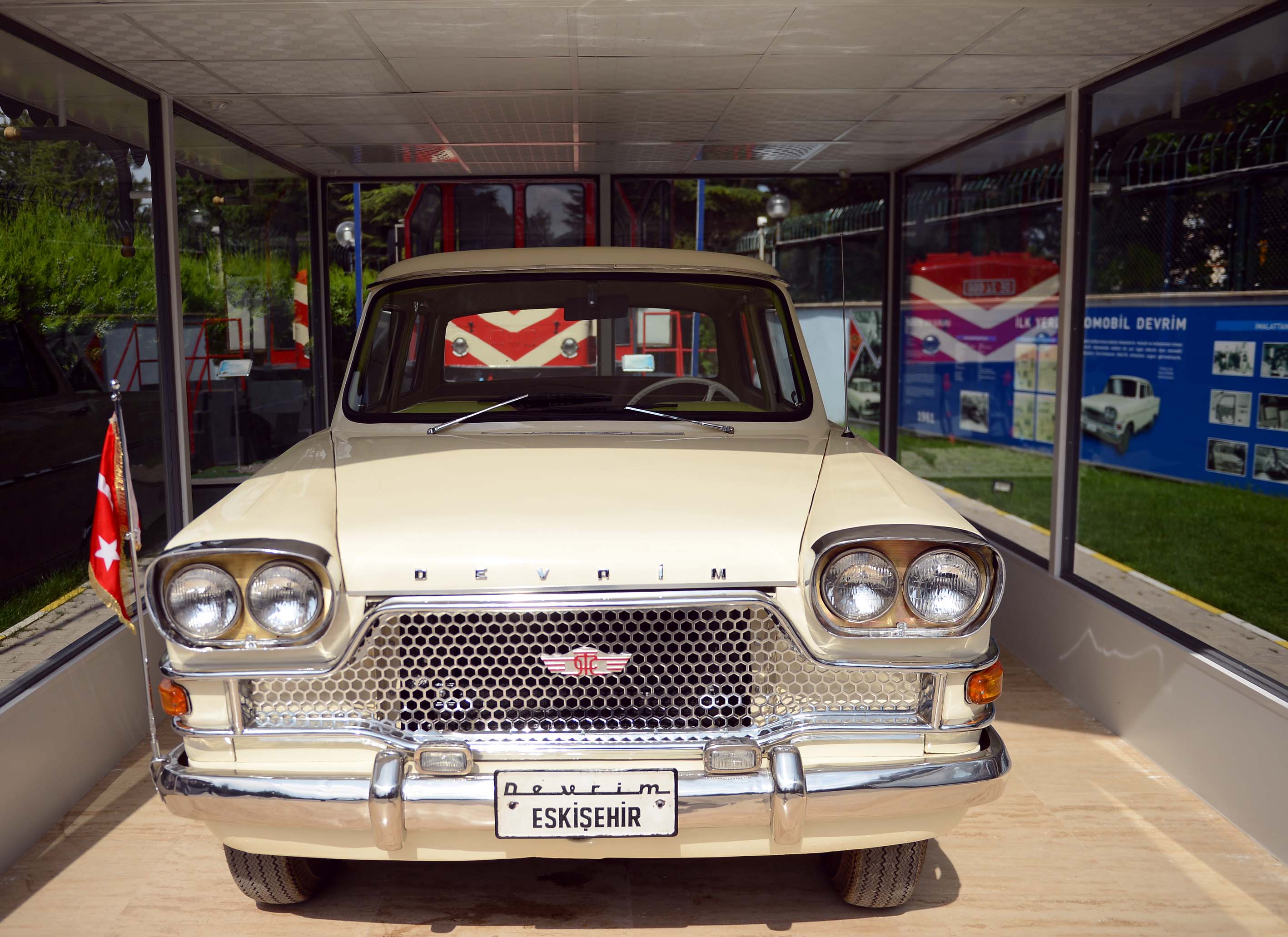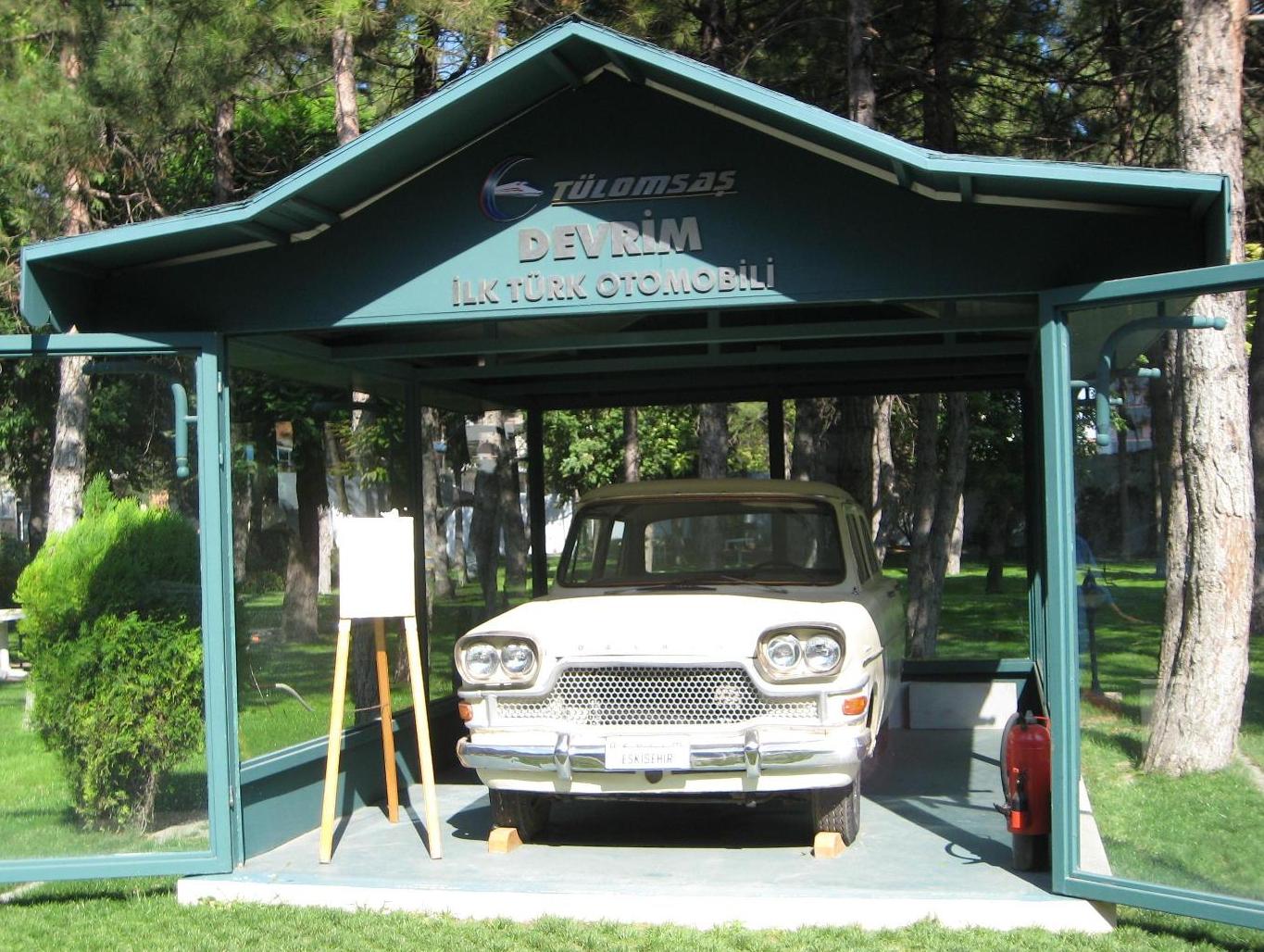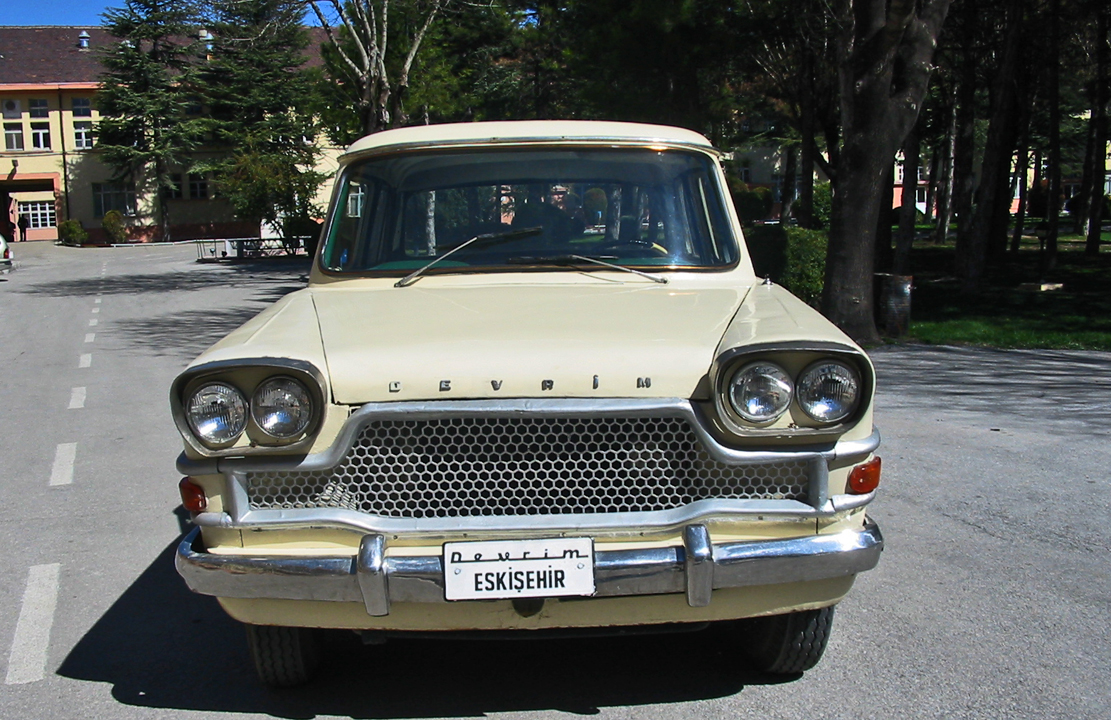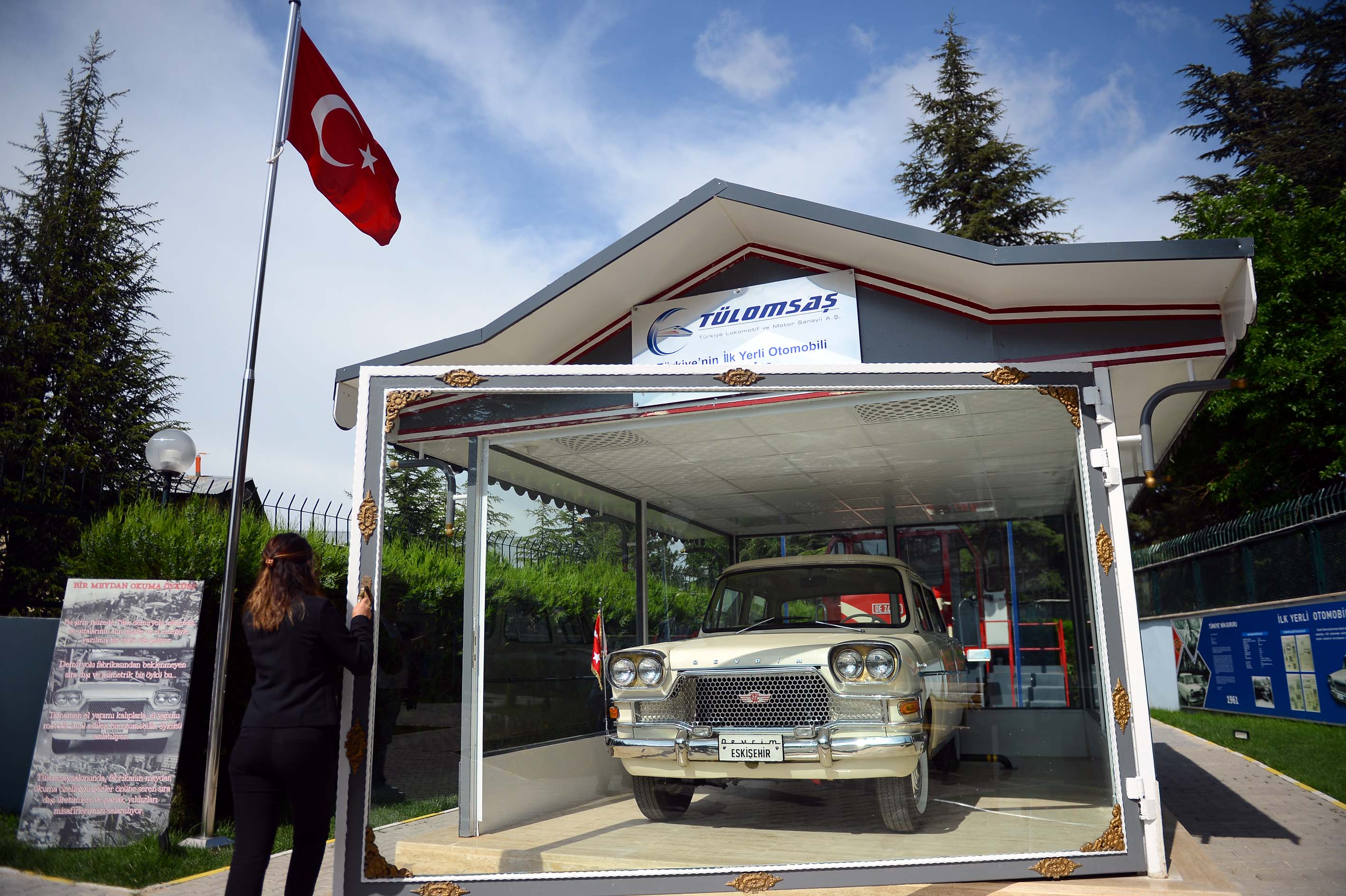Have you ever wondered how a nation's industrial dreams, the sleepless nights of a handful of engineers, and incredible determination turned into a legend because of a few forgotten liters of gasoline? This isn't just the story of a car; it's the story of a project that achieved the impossible in an astonishingly short 129 days, only to have its fate sealed by an unfortunate moment and ruthless headlines. Introducing Devrim, Turkey's first automobile; a challenge that began as a success story and turned into a poignant legend.
In this article, I won't just take you on a journey into the past; I'll also tell you how you can meet the sole surviving witness to this legend. If you're ready, let's get behind the wheel and set our course for Eskişehir, the birthplace of this national pride. Get ready to learn the truths behind the infamous the gas ran out moment and to touch this historical heritage.
Visit the Devrim car in its special glass enclosure at the TÜRASAŞ facilities
When you step into Eskişehir, you're greeted not just by a modern city, but also by a historic site that houses one of the most important pieces of Turkey's industrial memory. Inside the TÜRASAŞ (formerly TÜLOMSAŞ) facilities, behind a carefully preserved glass partition, stands that legendary automobile: Devrim. The moment you see it, you understand that this is not just any old car in a museum. This is the tangible form of a dream, a challenge, and the superhuman effort of a handful of people.
This visit is much more than a tourist trip; it's like a moment of tribute. This car, which has defied the years and is still in working condition, is living proof of what Turkish engineering could achieve even with limited resources. The glass walls surrounding it feel as if they are there not just to protect it from dust, but also from unfair criticism and neglect. Visiting this museum is not just seeing a car; it's witnessing a nation's industrial dream.
Here's what you need to know to have this unique experience:
| Devrim Automobile Museum Visitor's Guide | |
|---|---|
| Address | TÜRASAŞ Eskişehir Regional Directorate, Ahmet Kanatlı Cad. 26490, Eskişehir |
| Visiting Hours | Weekdays: 10:00 AM - 5:00 PM, Weekends: 09:00 AM - 5:00 PM |
| Closed Day | Monday |
| Entrance Fees | Full: 50 TL, Discounted: 30 TL |
| Contact | Tel: +90 (222) 224 00 00 |
| Important Note | Visits are conducted in limited groups by appointment, so it's a good idea to call before you go. |
Getting to the museum is quite easy. It is located very close to the Eskişehir Train Station and can be easily reached by public transport from the city center.

Learn the inspiring story of this important project in Turkey's industrial history
Like every great story, Devrim's story began with a big dream. But there was almost no time to make this dream a reality. Let's look at the details of that incredible countdown and the fateful day together.
A Presidential Order: The 129-Day Countdown
The date is June 16, 1961. The president of the time, Cemal Gürsel, gave a historic order after the Automotive Industry Congress: a completely domestic automobile was to be produced to meet the needs of the army's passenger vehicles. The task was given to the Eskişehir Railway Factories, as it was then known. A budget of 1,400,000 TL was allocated for the project. But there was a problem: the car had to be ready for the Republic Day ceremonies on October 29. This meant there were only 129 days to complete the project. In those days, almost everyone, from universities to the press, from industrialists to politicians, believed that not even an engine could be made in Turkey. This task was a challenge to the impossible.
The Heroes in the Workshop: Sweat, Hammers, and Dedication
An unused foundry in Eskişehir was transformed into the workshop for this dream. A calendar was hung on its door, with the number of days left crossed off each day. The team, consisting of about 20 engineers and 200 workers, entered a race against time. They worked at least 12 hours a day, including weekends, and when necessary, they slept in the workshop on a dismantled car seat. The car's body was shaped entirely by hand, with hammers, on concrete blocks prepared according to plaster models. This was not just a production process; it was an epic of faith and dedication. This project proves that Eskişehir is not just a student city but also the industrial heart of Turkey. To explore this side of the city further, you can check out our article on other historical places to visit in Eskişehir.
That Fateful Day: The Gas Ran Out, The Legend Began
And when the calendars showed the morning of October 29, 1961, the impossible had been achieved. Two Devrim cars, one black and one cream-colored, were ready to be sent to Ankara by train. However, the small but critical detail that would change the story's fate was hidden in this train journey. As a precaution against sparks that could fly from the steam locomotive, the vehicles' tanks were almost completely emptied for safety. The plan was to refuel upon arrival in Ankara.
However, while heading to the ceremony area in Ankara with a motorcycle escort, this refueling plan was forgotten in the chaos. When President Cemal Gürsel arrived in front of the Parliament, he got into the black Devrim. The vehicle moved about 100 meters, then sputtered and stopped. To Gürsel's question, What happened?, the answer from Chief Engineer Rıfat Serdaroğlu, who was at the wheel, went down in history: My Pasha, the gasoline ran out. Upon this, Gürsel uttered his famous and poignant words: We built a car with a Western mind, but we forgot to put gasoline in it with an Eastern mind.
The project's fate was sealed at that moment. The next day, as if by agreement, the newspapers came out with headlines like Devrim Broke Down After 100 Meters. No one mentioned that Cemal Gürsel immediately got into the other Devrim and went to Anıtkabir without any problems, or that the car participated in the parade at the hippodrome. The perception that the money spent on the project was wasted spread rapidly. This negative public opinion destroyed the political and financial will needed for mass production. In fact, this incident was a bitter example of how a simple logistical error could sabotage a project's future. The negative atmosphere created by the media completely overshadowed Devrim's technical success and led to the project being shelved. What's even more thought-provoking is that while no one talked about the huge 25 million TL budget allocated by the Ministry of Agriculture for the Improvement of the Horse Breed that same year, there was an uproar about the 1.4 million TL Devrim project being wasted. This situation reveals that the project's failure was not technical, but entirely the result of perception management and public pressure.

Take a closer look at this domestic automobile produced in 1961
Devrim is not just a story; it was also a very successful engineering product for its time. Let's take a closer look under the hood and at the design details of this legendary car.
Almost Entirely Domestic
One of the most impressive aspects of the Devrim project was its locality rate. The engine block and cylinder head were cast at the Sivas Railway Factory and machined in the workshop in Ankara. Critical parts like the piston and rings were manufactured in Eskişehir, the heart of the project. Apart from a few items that were not produced in Turkey at the time, such as the electrical system, differential gears, glass, and tires, the entire car was produced with domestic resources. This is the clearest proof that Devrim was not just an assembly project, but a real production success.
The table below shows just how ambitious a car Devrim was for 1961:
| Devrim Automobile Technical Specifications | |
|---|---|
| Engine | 4-cylinder, 4-stroke |
| Power | 50-60 horsepower (hp) |
| Weight | Approx. 1250 kg |
| Max Speed | 140 km per hour |
| Dimensions (L/W/H) | 4500 / 1800 / 1550 mm |
| Transmission | 3 forward, 1 reverse gear |
Four Different Characters
A total of 4 cars were produced as part of the project. The team gave these cars cute names like Siyah (Black), Beyaz (White, the beige car exhibited in the museum today), Mavi Boncuk (Blue Bead), and Gecekondu (Shantytown) for the first prototype, which had some missing parts. This is a sweet detail that shows the human spirit with which the project was carried out.
Furthermore, Devrim was ahead of its time with some of its features. For example, the high and low beams could be switched with a foot-operated pedal. In addition to the ignition key, it could also be started manually with a lever in case of an emergency. These small but clever details prove how creative and forward-thinking the engineers were.

A Day in Eskişehir After Seeing Devrim
After witnessing the inspiring yet sad story of Devrim, Eskişehir has many more beauties to offer. You can make your trip unforgettable by combining this historical and emotional visit with the city's modern and vibrant atmosphere.
After leaving the museum, head to Odunpazarı, the historical heart of the city. Walk on its cobblestone streets, take photos of the bay-windowed mansions, and browse the handmade meerschaum products at the Atlıhan Handicrafts Bazaar. Then, you can revisit your childhood at the Fairy Tale Castle and Pirate Ship in Sazova Science, Culture, and Art Park, one of Turkey's largest parks. The ideal place to relieve the day's fatigue is the
Porsuk River and the surrounding Adalar region, which flows through the middle of the city. Here you can take a gondola tour or sit in one of the riverside cafes and enjoy the city. After the inspiring story of Devrim, tasting the city's famous flavors will make your trip unforgettable. Be sure to check out our article on Eskişehir's best food stops and where you can eat Çiğbörek.
Frequently Asked Questions (FAQ)
Question 1: Why didn't the Devrim car go into mass production?Answer: The project remained at the prototype stage. The incident of running out of gas during the presentation on October 29, 1961, which was portrayed in the press as it went 100 meters and broke down, created negative public opinion about the project and cut off the political and financial support needed for mass production.
Question 2: Is the surviving Devrim car still in working condition?Answer: Yes, the beige Devrim car exhibited at the TÜRASAŞ Devrim Automobile Museum in Eskişehir is still in working condition. This is proof of how successful its engineering was.
Question 3: How many Devrim cars were produced in total, and what happened to the others?Answer: A total of 4 Devrim automobiles were produced. Unfortunately, only one has survived to this day. The other three prototypes and ten engines were scrapped over time.
Source: For more detailed technical information and historical documents about the Devrim Automobile, you can visit the official website of the TÜRASAŞ Devrim Automobile Museum: http://devrimarabasi.com.tr/.


 English
English Türkçe
Türkçe